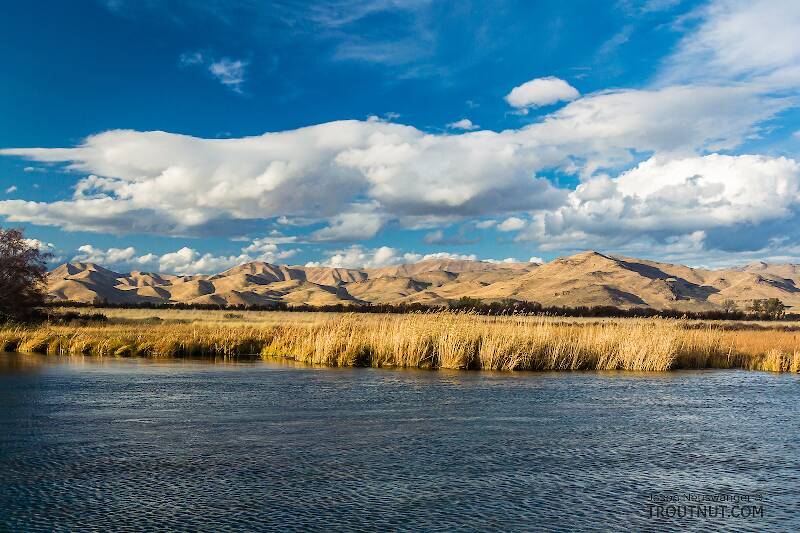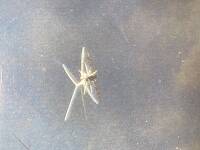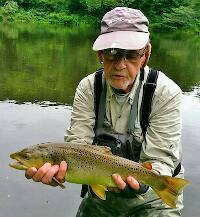
Blue-winged Olives
Baetis
Tiny Baetis mayflies are perhaps the most commonly encountered and imitated by anglers on all American trout streams due to their great abundance, widespread distribution, and trout-friendly emergence habits.
Featured on the forum

Troutnut is a project started in 2003 by salmonid ecologist Jason "Troutnut" Neuswanger to help anglers and
fly tyers unabashedly embrace the entomological side of the sport. Learn more about Troutnut or
support the project for an enhanced experience here.
Updates from July 4, 2017
Updates from July 4, 2017
Photos by Troutnut from the South Fork Sauk River in Washington



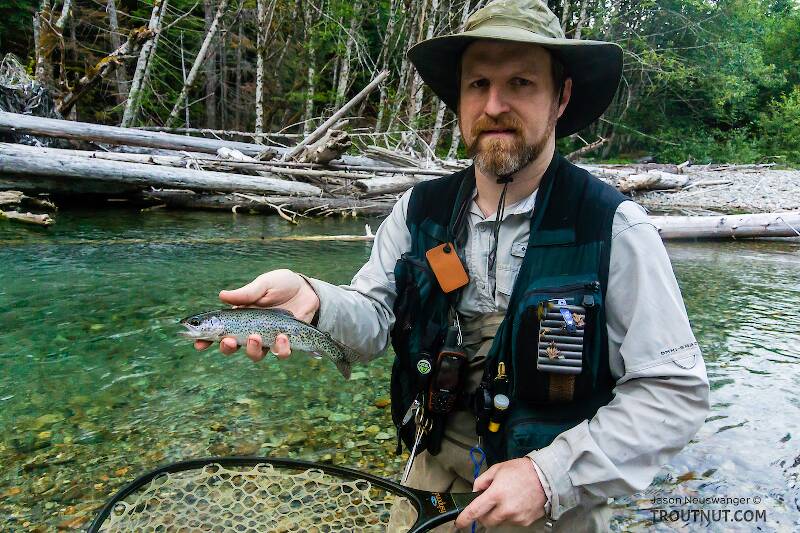

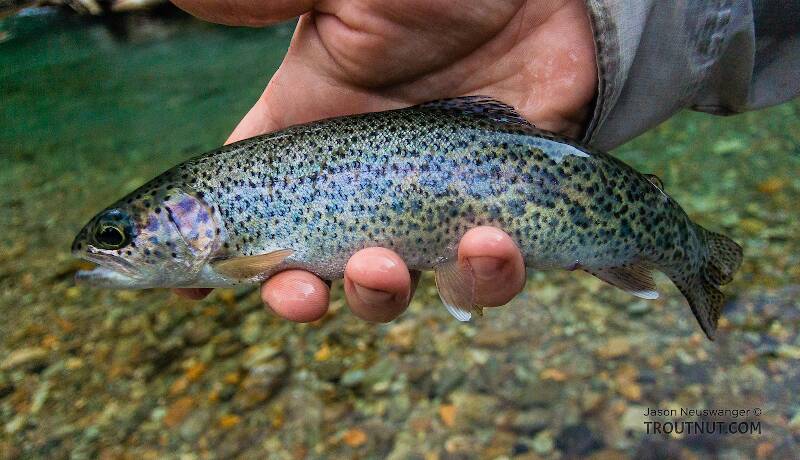



Closeup insects by Troutnut from the South Fork Sauk River in Washington
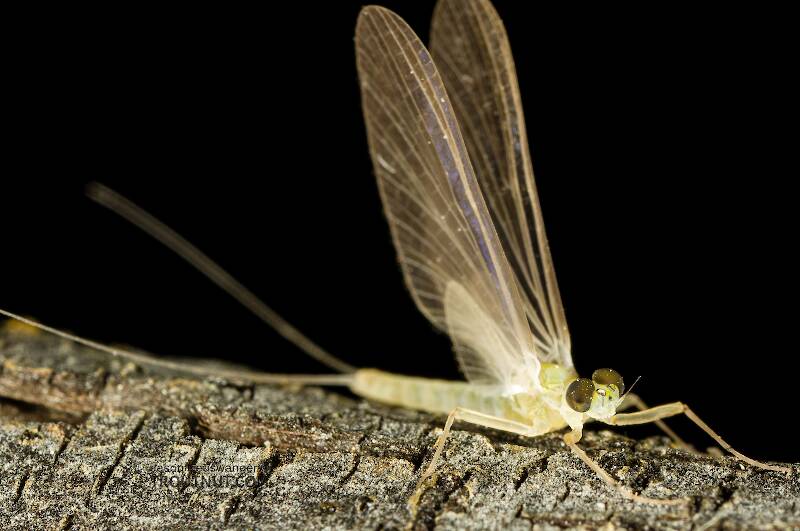
The lack of a darkened humeral crossvein rules out Epeorus albertae and Epeorus dulciana. The lack of a dark macula on the forefemora rules out Epeorus longimanus. The small size rules out Epeorus grandis and Epeorus permagnus. That leaves as the only possibility known in Washington state Epeorus deceptivus. It is a small species, although not reportedly quite as small as this specimen. I couldn't find anything in the species description in Traver (1935) to definitively confirm or rule out the species ID, given that I don't have the preserved specimen to check under a microscope, but it has to be either deceptivus or something not yet reported in Washington.
It was collected at the same time as a similar-sized female dun.
It was collected at the same time as a similar-sized female dun.
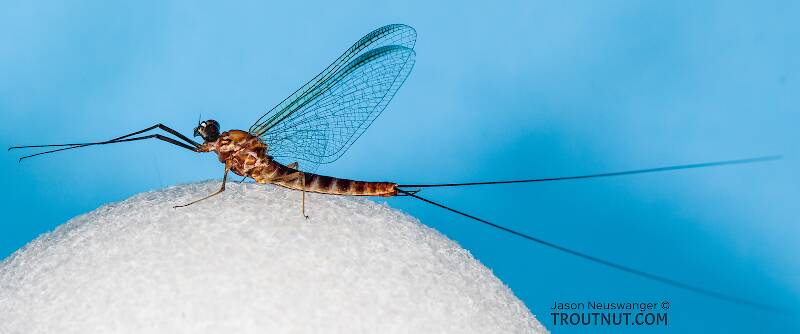
I'm fairly sure this is a specimen of Rhithrogena virilis based on closeup examination of the reproductive anatomy under the microscope (not shown in photos). The other other species of Rhithrogena this large is Rhithrogena flavianula, but the key in Needham's Biology of Mayflies mentions annulation in the abdomen (visible in some images on bugguide.net) more distinct than that on this specimen.
The body and front wing were both about 15.5 mm long, while the cerci were 40 mm long.
The body and front wing were both about 15.5 mm long, while the cerci were 40 mm long.
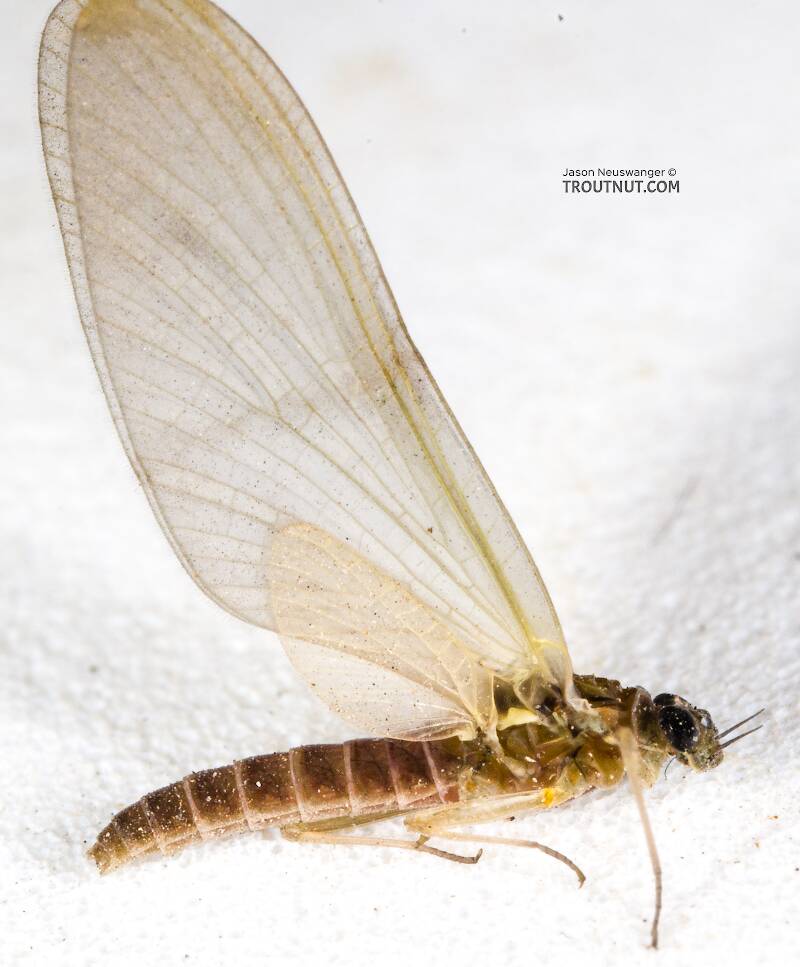
I'm guessing this female is of the same species as this male dun, because they came from the same pool at the same time and the size matches, although the males and females would look very different in this case.
Quick Reply
Related Discussions
Topic
Replies
Last Reply
3
Mar 30, 2012
by Entoman
by Entoman
3
Feb 12, 2009
by Creno
by Creno
Re: Lots of new pictures to check out, coming online tonight/tomorrow
In General Discussion by Troutnut
In General Discussion by Troutnut
1
Oct 4, 2006
by Dinerobyn
by Dinerobyn
Re: hook size (and chocolate duns, and old-timey mayfly family classifications)
In Eurylophella Mayfly Nymph by Warren
In Eurylophella Mayfly Nymph by Warren
10
Apr 13, 2007
by Quillgordon
by Quillgordon
5
Mar 5, 2018
by Smallflyguy
by Smallflyguy

